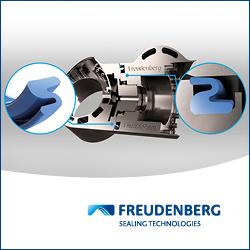Kollmorgen Performs 5G Tests with Ericsson to Explore Autonomous Mobile Robot Capabilities
• In testing the 5G network had smoother antenna handover compared to Wi-Fi roaming between access points. • 5G has the potential to enable advanced Computer Vision and Deep Learning running on the NDC Solutions platform through cloud computing.
Kollmorgen is currently performing 5G tests with Ericsson to explore future Mobile Robot capabilities. 5G can enable new levels of AI and Machine Learning, simplify requirements for infrastructure, and increase network stability - which could dramatically increase performance and cost efficiency for Kollmorgen's partners, that today include 6 out of the top 10 global players in material handling, such as Toyota Material Handling, Jungheinrich AG, and Mitsubishi Logisnext (Rocla).
"We want to continue to push the boundaries of Mobile Robot applications with our NDC Solutions platform. 5G holds the key to unlock more advanced routing of intralogistics, generate better insights, improve predictive maintenance, and speed-up commissioning. It is also likely going to be the future standard of industrial communication infrastructure" said Peter Bladh, Director R&D, Kollmorgen.
5G has several advantages compared to Wi-Fi. can result in better scalability and cost savings, as the reduced latency allows for moving the advanced computations on the vehicle to either on-premises servers, or into the cloud. That means that the computational performance would not be limited by the onboard unit of the Mobile Robot, which in turn can enable the next level of Computer Vision and Deep Learning. 5G infrastructure is also potentially far easier to set up compared to Wi-Fi. In addition, 5G can allow localization in dynamic environments without requiring artificial landmarks.
Kollmorgen's tests with Ericsson were carried out on a private 5G network as well as a public 4G network by using an Autonomous Mobile Robot, controlled by the Kollmorgen NDC S platform. The Wi-Fi communication link in the Kollmorgen CVC700 onboard vehicle control unit was replaced with a 5G communication link. Test results were promising - The NDC Solutions hardware and software proved to run as stable on 5G as on Wi-Fi. Furthermore, a seamless 5G antenna handover was observed. This is an important observation, as stable roaming between access points is a recurring challenge while configuring Wi-Fi networks for fast-moving mobile robot applications.
"These tests are just the beginning of our 5G journey. Our initial aim was to prove that our NDC Solution platform is agnostic to the type of communication link used and explore the performance differences between 5G and Wi-Fi. Having done so, we are confident to say that NDC Solutions is 5G ready. This is a very interesting milestone for us, and we are excited to explore and discover more capabilities that can dramatically benefit our partners and end-users" said Peter Bladh, Director R&D, Kollmorgen.
"Autonomous material handling requires both powerful and secure connectivity, and a robust ecosystem of application providers. Ericsson is proud to partner with Kollmorgen to enable Automatic Guided Vehicles with industry grade reliable connectivity from Ericsson Private 5G, ensuring smooth and safe operations" said Thomas Noren, Head of Dedicated Networks at Ericsson.
About Ericsson
Ericsson enables communications service providers to capture the full value of connectivity. The company's portfolio spans Networks, Digital Services, Managed Services, and Emerging Business and is designed to help customers go digital, increase efficiency and find new revenue streams. Ericsson's investments in innovation have delivered the benefits of telephony and mobile broadband to billions of people around the world. The Ericsson stock is listed on Nasdaq Stockholm and on Nasdaq New York. www.ericsson.com
Featured Product

